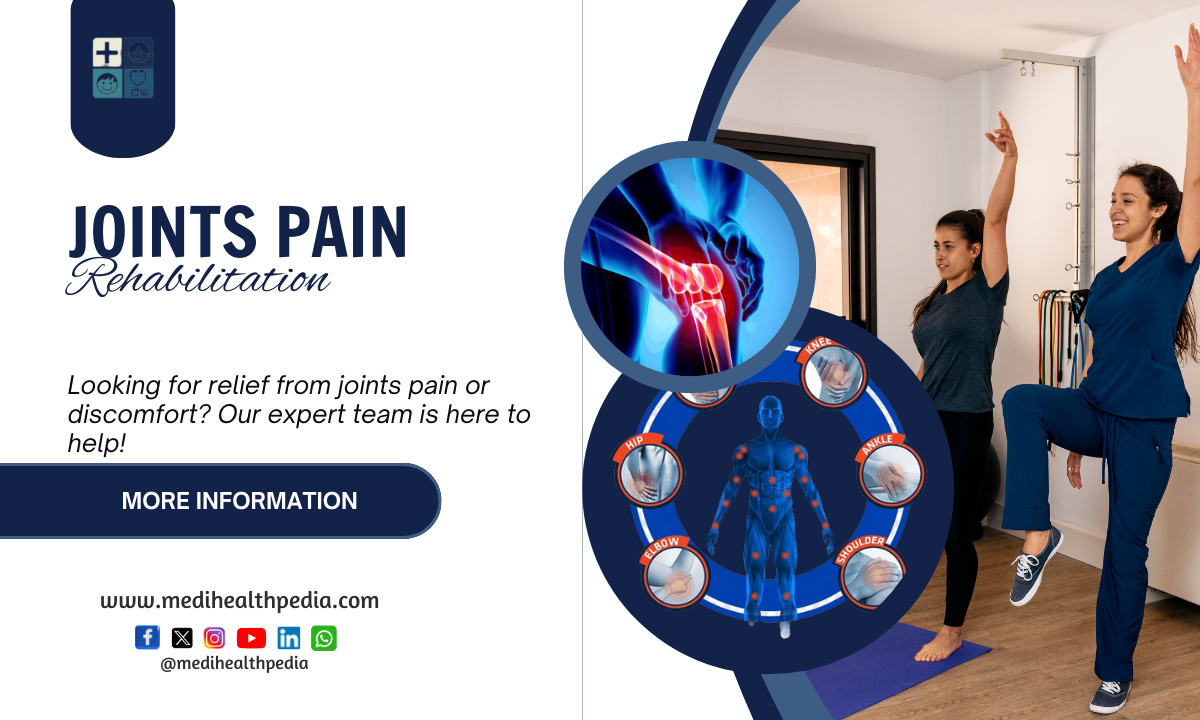Conquering Joints Pain: Clinical Mastery, Herbal Solutions, and Lifestyle Strategies for Lasting Relief
- Conquering Joints Pain: Clinical Mastery, Herbal Solutions, and Lifestyle Strategies for Lasting Relief
- Introduction
- Clinical Overview of Joints Pain
- Clinical Presentation of Joint Pain
- Basic Investigations for Joint Pain
- Complications of Joint Pain
- Conventional Treatment of Joint Pain
- Prevention of Joint Pain
- Herbal Medicines for Joint Pain Treatment
- Lifestyle Modification for Joint Pain Management
- Conclusion
Introduction
Joints pain, a common complaint affecting people of all ages, can be a source of discomfort and reduced quality of life. This article offers a detailed exploration of joint pain, covering its clinical overview, clinical presentation, essential diagnostic investigations, potential complications, conventional treatment options, preventive strategies, the role of herbal medicines in treatment, lifestyle modifications, and concludes with valuable insights for individuals seeking to find relief and regain their mobility.

Clinical Overview of Joints Pain
Understanding the clinical overview of joint pain is essential for a comprehensive grasp of this often debilitating condition:
- Definition: Joints pain, or arthralgia, refers to discomfort, aches, or soreness in one or more joints, where two or more bones meet.
- Prevalence: It is a widespread issue, affecting millions of individuals around the world.
- Classification: Joint pain can manifest as acute or chronic and may result from various causes, including arthritis, injuries, and infections.
- Contributing Factors: Joint pain can be influenced by a variety of factors, including age, genetics, lifestyle, and underlying health conditions.
Clinical Presentation of Joint Pain
The clinical presentation of joint pain can vary widely, with symptoms that depend on the underlying cause and affected joints, including:
- Pain: Discomfort or aching sensations in the joints, which can range from mild to severe.
- Swelling: Inflammation or swelling around the affected joints, often accompanied by warmth and redness.
- Stiffness: Reduced range of motion, making it challenging to move the joint.
- Crepitus: A crackling or grating sensation or noise when the joint is moved.
- Weakness: Muscular weakness or atrophy in the area surrounding the affected joint.
Basic Investigations for Joint Pain
While joint pain is often diagnosed based on clinical symptoms, specific investigations may be helpful for confirmation and determining the cause:
- X-rays: To assess the joint’s structure, including bone damage or arthritis.
- Blood tests: To check for markers of inflammation, autoimmune diseases, or infections.
- Joint aspiration: A procedure to remove fluid from the joint for analysis, which can help diagnose infections or inflammatory conditions.
- MRI or CT scans: For a more detailed view of the joint and surrounding structures, useful in evaluating soft tissue injuries and conditions like herniated discs.
Complications of Joint Pain
Untreated or poorly managed joint pain can lead to several complications and challenges for individuals:
- Reduced mobility: Severe joint pain can limit movement and lead to muscle atrophy.
- Deformities: Long-term inflammation may cause joint deformities, particularly in cases of inflammatory arthritis.
- Emotional impact: Persistent pain can contribute to stress, anxiety, and depression.
- Impaired quality of life: Joint pain can hinder daily activities and reduce overall well-being.
Conventional Treatment of Joint Pain
Managing joint pain typically involves a combination of non-pharmacological and pharmacological approaches:
- Non-pharmacological treatments:
- Physical therapy: To improve joint strength, flexibility, and function.
- Assistive devices: Such as braces, crutches, or splints for added support.
- Lifestyle modifications: Including weight management and exercise to reduce strain on the joints.
- Medications:
- Over-the-counter pain relievers: Such as nonsteroidal anti-inflammatory drugs (NSAIDs) for mild to moderate pain.
- Prescription medications: Including disease-modifying antirheumatic drugs (DMARDs) or biologics for inflammatory joint conditions.
- Analgesics: Medications to relieve pain without reducing inflammation.
- Corticosteroids: Injected directly into the joint to reduce inflammation.
Prevention of Joint Pain
While not all causes of joint pain can be prevented, certain strategies can help minimize the risk and reduce symptoms:
- Maintain a healthy weight: Reducing excess stress on the joints can prevent pain and minimize the risk of arthritis.
- Exercise regularly: Engaging in physical activity can improve joint function, strengthen supporting muscles, and maintain joint flexibility.
- Protect your joints: Use proper body mechanics to avoid injuries and wear protective gear when necessary.
- Avoid excessive repetitive motions: Overuse of a particular joint can lead to joint pain or injury.
Herbal Medicines for Joint Pain Treatment
Herbal remedies can provide complementary support for managing joint pain, though they should not replace conventional treatments. Some herbal options include:
- Turmeric: Known for its anti-inflammatory properties, it may help reduce joint pain and stiffness.
- Ginger: With natural anti-inflammatory effects, ginger may alleviate pain and improve joint function.
- Boswellia: A resin extract that can reduce joint inflammation and pain.
- Devil’s Claw: Contains compounds that may help relieve arthritis-related joint pain.
- Arnica: A topical remedy that can be applied to painful joints to reduce inflammation and discomfort.
Lifestyle Modification for Joint Pain Management
Individuals with joint pain can make lifestyle changes to support better joint health:
- Gentle exercise: Engage in low-impact activities such as swimming or walking to maintain joint flexibility.
- Balanced diet: Consuming foods rich in anti-inflammatory nutrients like omega-3 fatty acids and antioxidants can help reduce joint pain.
- Weight management: Maintaining a healthy weight can reduce the strain on weight-bearing joints.
- Joint protection: Use assistive devices or ergonomic aids to minimize joint stress in daily activities.
Conclusion
Joint pain, a widespread condition with various potential causes, can significantly impact an individual’s quality of life. However, a deeper understanding of its clinical overview, clinical presentation, and diagnostic aspects empowers individuals to seek effective management strategies. While conventional treatments remain primary, exploring preventive measures, herbal remedies, and lifestyle modifications can offer valuable supplementary support.
Living with joint pain may present challenges, but with the right knowledge and effective management, individuals can improve their quality of life, reduce pain and stiffness, and regain their mobility. Education, awareness, and ongoing care are vital components of the journey to achieving better joint health and overall well-being for those grappling with joint pain.

